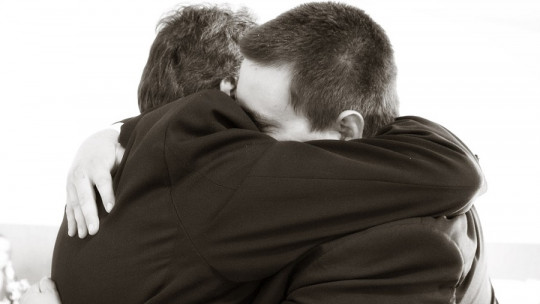
Bulimia is one of the best-known eating disorders, although some people confuse it with anorexia. Now, to understand well what its nature is It must be clarified that there are different types of bulimiaand not a homogeneous diagnostic category.
Below we will see what these types of bulimia are and what their characteristics are. But first, let’s start with the basics.
What is bulimia?
Bulimia is an eating disorder characterized by phases of binge eating and purging or compensatory behaviors. It is associated with strong emotional discomfort, damage to health and a behavioral dynamic based on impulsivity, since you lose control over what you do and sacrifice long-term projects for the simple fact of living in a spiral of binge eating and purging, moments of anxiety and strong sadness associated with a low self-esteem.
Unlike anorexia, bulimia usually appears between the ages of 18 and 25 and is more typical of impulsive and addiction-prone people than of perfectionists and planners.
Phases of this disorder
The phases of bulimia are the following:
1. Binge
Is eating a lot of food and drink to satisfy an urge. In addition, normally the foods we eat have a high caloric load. It appears abruptly and under a feeling of loss of control, since, among other things, one tries to eat the greatest amount of food in the shortest possible time, filling the mouth and chewing little.
The frequency with which these episodes occur is highly variable, and can range from once every several weeks to several times a day. This phase It is common in all types of bulimia.
2. The purge and compensatory rituals
After the binge, a feeling of guilt appears and reactions aimed at preventing weight gain. Normally purging consists of making oneself vomit by putting one’s fingers in the mouth, but in certain cases it may involve the use of laxatives. Compensatory behaviors are also common, such as exercising a lot or trying to fast.
It is believed that this “ritual” is a consequence of the cognitive dissonance generated by the conflict between ideas (I don’t want to gain weight but I have binged) and by a history of contingencies by which this action has been reinforced.
3. Surveillance state
After these phases the person remains in a state of concern and vigilancea stage associated with a feeling of discomfort. The state of alertness contributes to fueling rumination and making recurring thoughts appear more frequently.
On the other hand, this condition causes attention to constantly return to the memory of the experiences linked to the disorder, with which everything that is done appears conditioned by the way in which the person positions themselves towards this problem.
Types of bulimia
Once we have seen the main characteristics of the disorder, let’s move on to the types of bulimia. There are two: purgative bulimia and non-purgative bulimia.
1. Purgative or purgative bulimia
This type of bulimia is characterized by being accompanied by a purgation phase.
It is usually done in private, but It is not planned too much and it also obeys an impulse. In this case, it is a desperate attempt to reverse what has been done and return to the situation before the binge, although its effects are also harmful, because stomach acids damage the cells of the duct that leads to the mouth and wears down the tooth enamel.
Another behavior that characterizes purgative bulimia is resorting to diuretics and laxativessomething that also has its associated risks and in any case does not prevent a good part of the calories ingested from passing into the body.
2. Non-purgative bulimia
In this type of bulimia, after the binge eating, there is no purging, but rather compensatory behavior. Unlike the other method, here it is assumed that what has been eaten will be processed by the digestive system, and therefore induced vomiting is not resorted to nor to diuretics or laxatives. However, actions are taken to compensate for this calorie intake, such as doing a lot of cardiovascular exercise or fasting for long periods.
The dangers related to non-nervous bulimia are, mainly, possible digestion interruptions, overuse of muscle groups or cardiovascular accidents, as well as the danger of fasting for too many hours (more than 24 hours can be harmful) and/or becoming dehydrated from trying to drink too little and not having water on hand.
Depending on the degree of obesity
Bulimia can also be classified into two types according to the profile of the people who suffer from it.
3. Bulimia associated with obesity
In these cases, the person is overweight to a greater or lesser degree, and feels bad about it. Your identity is already linked to that physical appearanceand that makes their self-esteem very low.
4. Bulimia associated with variable weight
In this type of bulimia, The patients’ body weight goes up and down as if it were a yo-yo. This means that many of these people can continue believing that they do not have a problem that should be treated by professionals since, although they feel bad, their true identity is that of their version with less weight.
The fact that they frequently see themselves with little volume and less fat makes them believe that this is “their essence” and that they will return to it at any time without therapeutic help. It is one of the types of bulimia most reluctant to cause a visit to a doctor or psychologist’s office.








